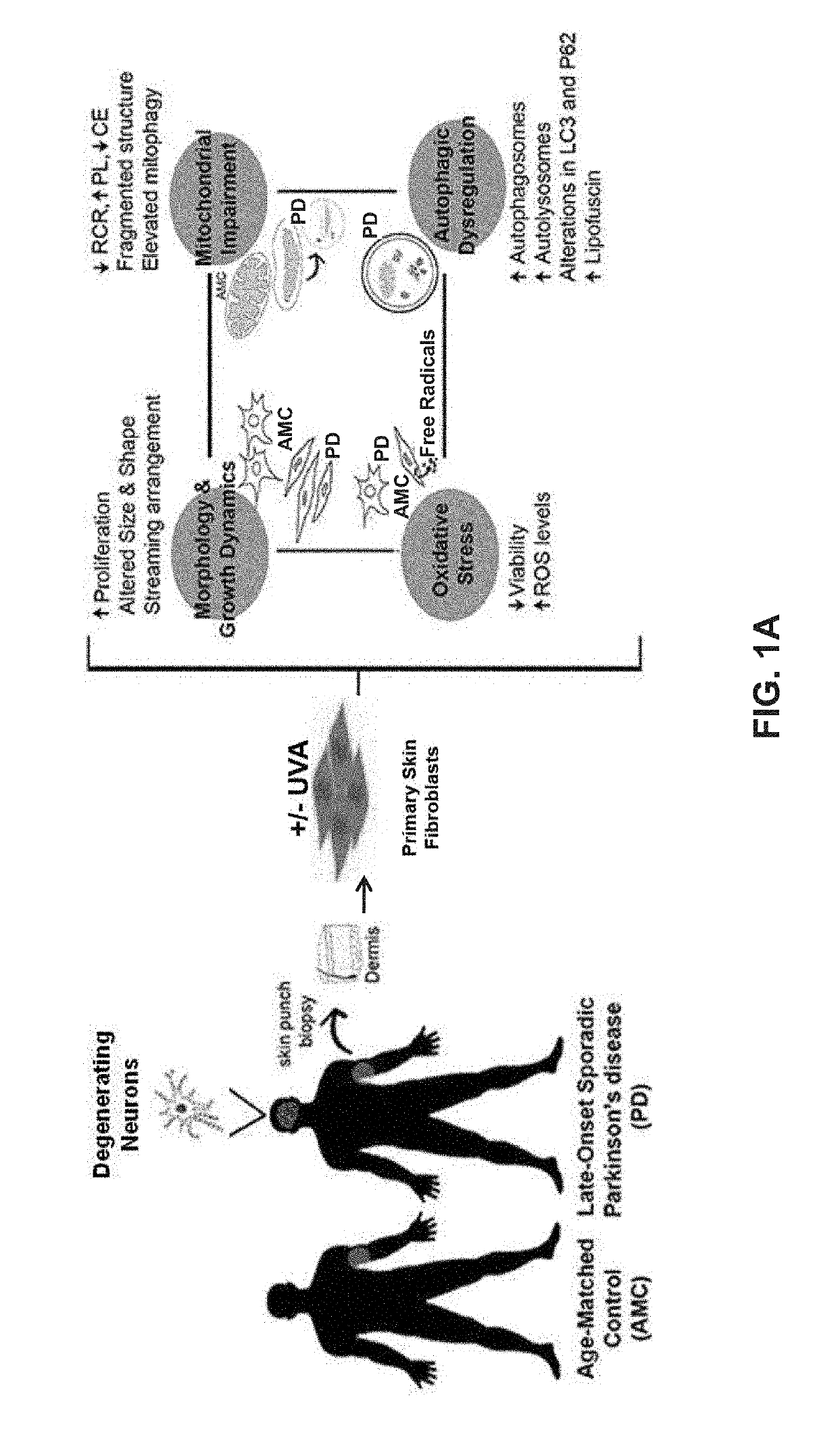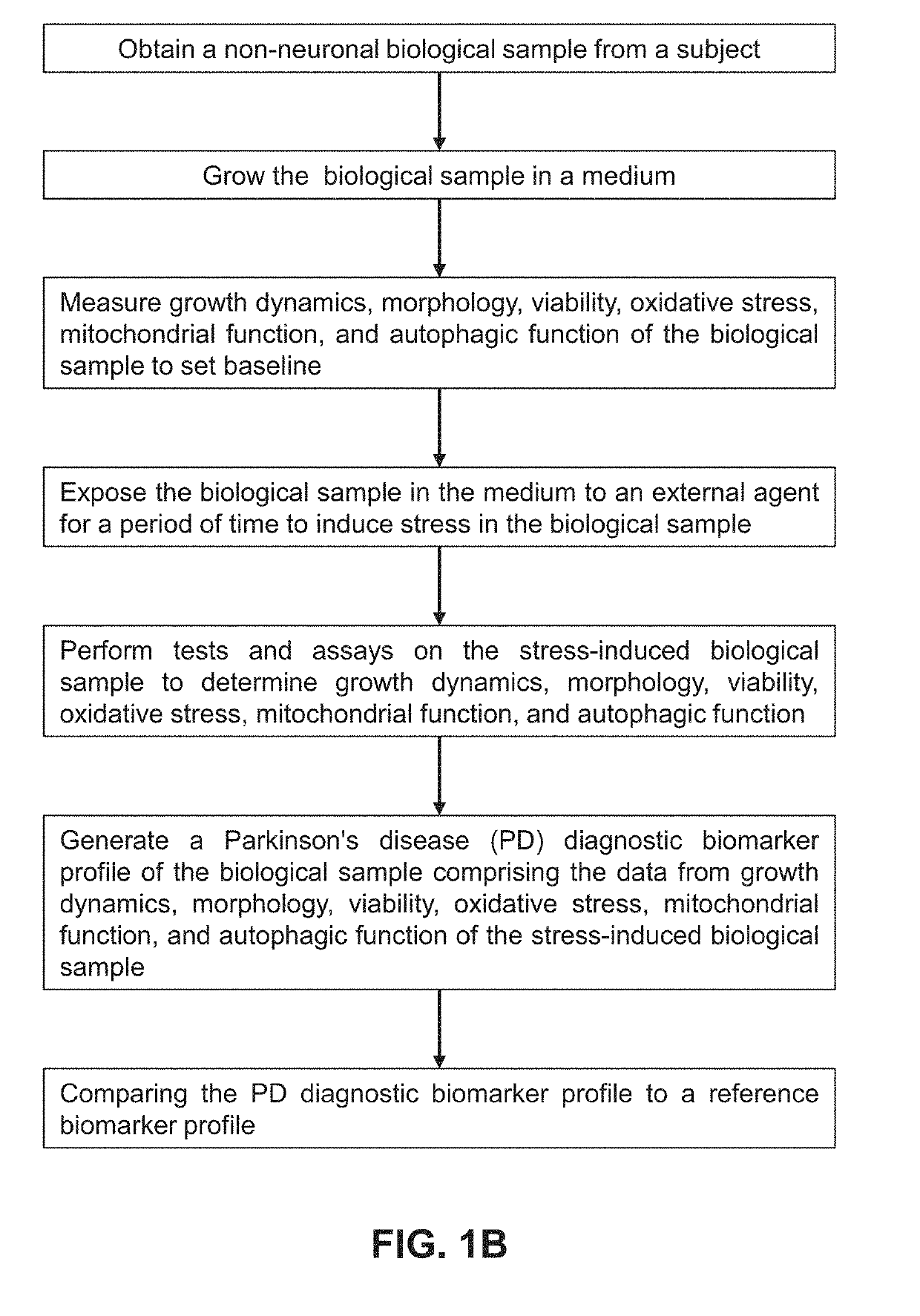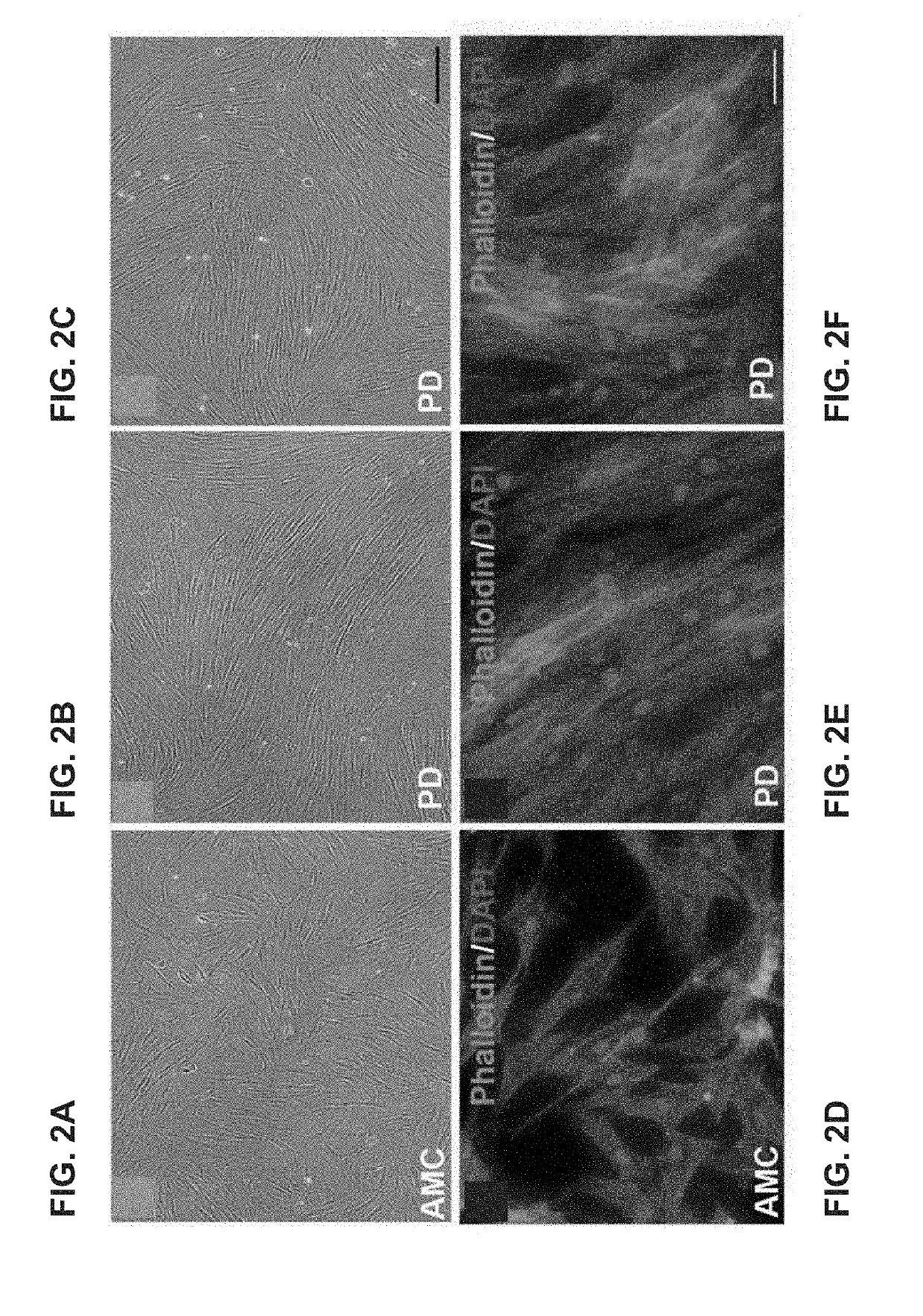Biomarker platform for parkinson's disease using patient-derived primary dermal fibroblasts
a parkinson's disease and primary dermal fibroblast technology, applied in the field of skin fibroblasts, can solve the problems of negative rcr, proton leakage, coupling efficiency, and rcr in the cells, and achieve the effect of improving the autophagy rate of pd cells relative to controls and improving the rcr
- Summary
- Abstract
- Description
- Claims
- Application Information
AI Technical Summary
Benefits of technology
Problems solved by technology
Method used
Image
Examples
example
[0051]The following is a non-limiting example of practicing the present invention. It is to be understood that said example is for illustrative purposes only and in no way limits the present invention. Equivalents or substitutes are within the scope of the invention.
[0052]Patient-derived primary dermal fibroblasts provide the advantages of being a an primary cell type, which reflects the unique genotype as well as the chronological and epigenetic aging history of donor individuals. As will be described in the following non-limiting example, dermal fibroblasts generated from skin biopsies obtained from persons diagnosed with late-onset sporadic and LRRK2 Parkinson's disease (PD), and healthy aged-matched control (AMC) individuals were examined, specifically, the morphology, growth dynamics, response to environmental stress, and the mitochondrial, and autophagy-related function of these cells.
[0053]It was found that fibroblasts derived from PD patients tend to grow in a more organized...
PUM
 Login to view more
Login to view more Abstract
Description
Claims
Application Information
 Login to view more
Login to view more - R&D Engineer
- R&D Manager
- IP Professional
- Industry Leading Data Capabilities
- Powerful AI technology
- Patent DNA Extraction
Browse by: Latest US Patents, China's latest patents, Technical Efficacy Thesaurus, Application Domain, Technology Topic.
© 2024 PatSnap. All rights reserved.Legal|Privacy policy|Modern Slavery Act Transparency Statement|Sitemap



